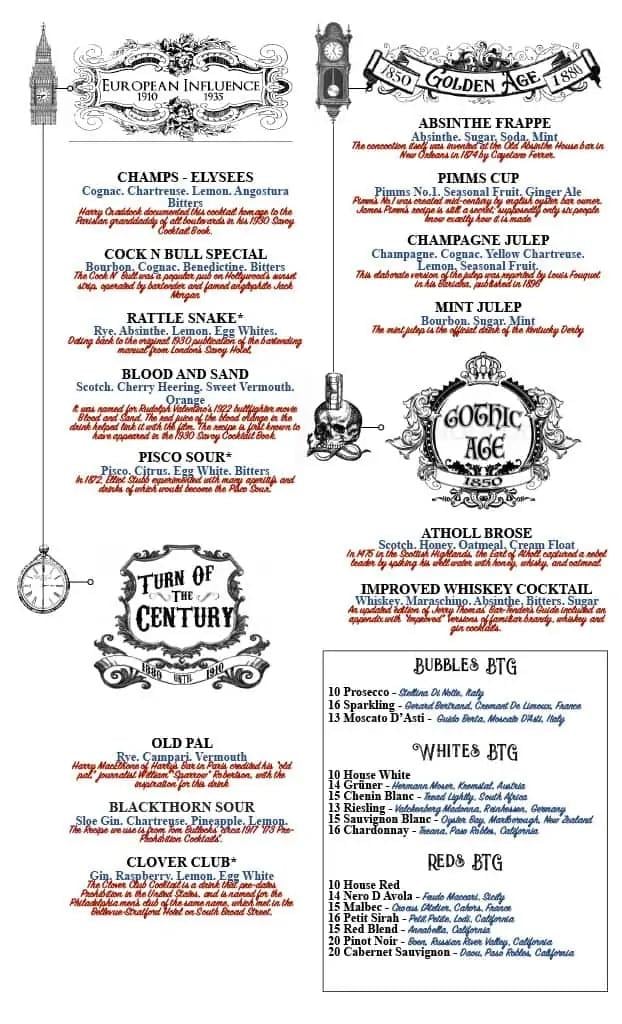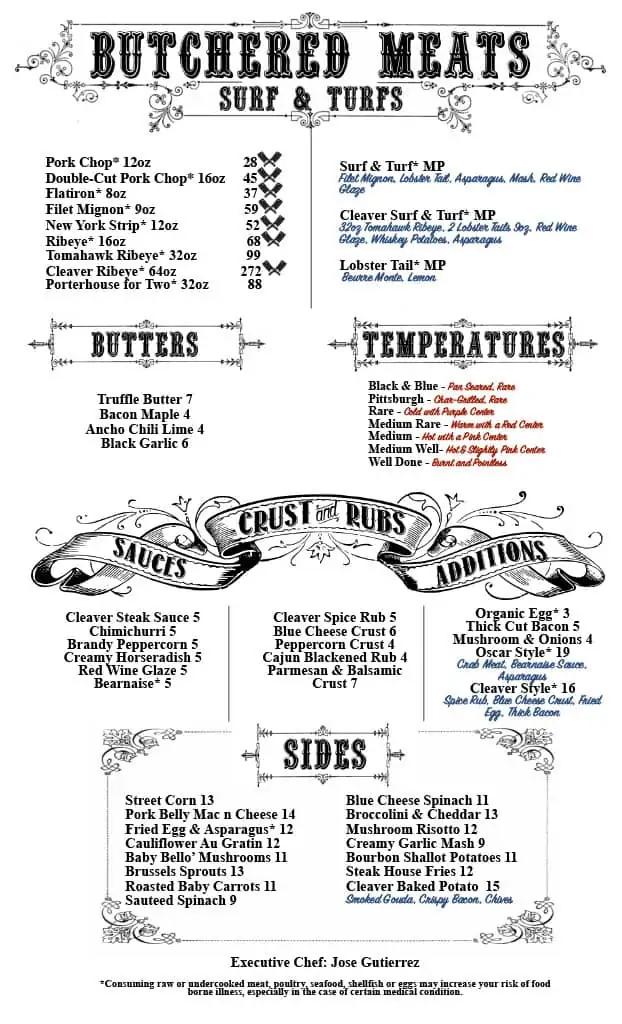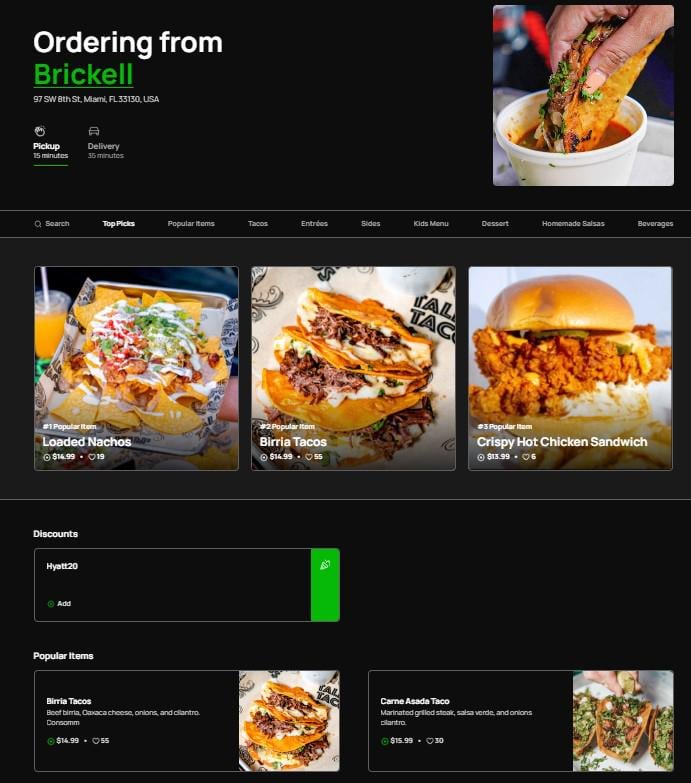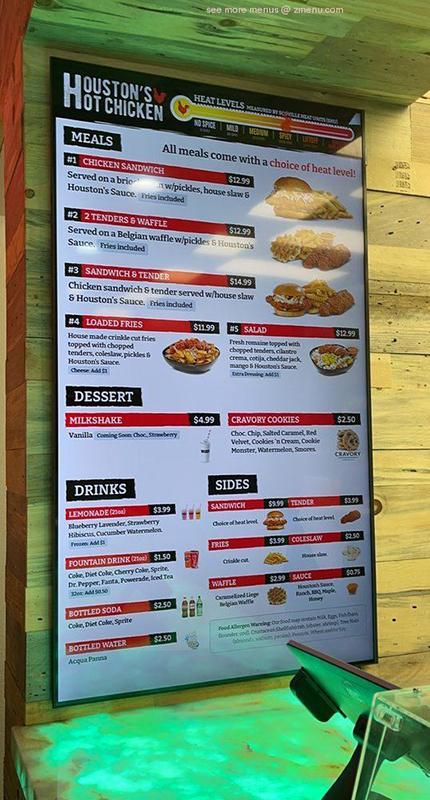In part one of this menu development series, we went over the 14 fundamental elements of developing an iconic menu; from the ideation stage through to the final testing and sale of your items.
Moving past the fundamentals for success, a question we often get asked once the menu items are created and tested is, “How do I now present a menu that’s created for different mediums such as print, online ordering, and digital?”
With nearly every brand operating with a hybrid of revenue channels, it is a valid question as each medium presents different challenges and opportunities. Before we dive into that, however, let’s first look at the general science behind both designing and reading bar and restaurant menus as that will set the tone for the three comparisons.
The Psychology
It’s likely no secret to you that your menu is your number-one marketing tool. Creating this tool, however, takes time, energy, and a tremendous amount of thought, which all comes back to the brand story and the earlier 14 fundamental elements for success.
No matter the medium a menu is presented on, the number one goal for any brand is to drive a frictionless decision without the guest over-thinking the price. No matter your choice in concept, you want to create and sell an experience first and foremost.
When you do that and pair it with an effective brand strategy, perceived value, targeted menu items, and a thoughtful customer journey map, you can win your customer over with your menu without them ever focusing on the price.
Since guests on any medium only spend an average of 109 seconds looking at your menu, your menu must be small, targeted, and balanced. It should be diverse and exciting for your guests, which is something we will get into more in the next installment of this series.
Whether you currently have a menu or you are creating a new one, I challenge you to time test it with family, friends, staff, and targeted customers through the use of a focus group to see how many make their decision within that 109 seconds. If it is longer, you may have some work to do.
Here are three other menu psychology tips to help your guests make a decision in 109 seconds—no matter the medium of the menu:
- Simplicity is always best. Any graphic designer will tell you to keep your font size, font style, and overall design within the "white space" — simple but on brand.
- Think about the usability of your menu. How easy is it to read and access in different situations such as on a phone, tablet, computer, in dark areas, or from a certain distance? You want to ensure that there are limited friction points throughout the ordering process.
- Use boxes and lines for visual direction. Emphasize your "star" and "puzzle" menu items with a box, a line, or a different font color, but remember that the more often you implement these tactics, the less impact they’ll have.
Keeping those psychology tips in mind, let’s look at the top three mediums in more detail: Print, Online, and Digital.
The On-Premise Menu (Print)
More so with printed menus, you want to tell a story. You want to engage and immerse your guests with thoughtful story telling, design, and menu optimization. Your menu needs to seamlessly flow without driving the thought on price. An example of this is the creative menu found at Cleaver in Las Vegas.
Their beverage menu flows through the different eras of cocktails—such as the Gothic Age (Atholl Brose), The Turn of the Century (Blackthorn Sour), and The Golden Age (Mint Julep)—which tells the story of the intended beverage program and matches the overall décor and bar staff uniforms.

On the food program side, their focus as a steakhouse is of course butchered meats, which flows perfectly from the top down—all on one page. This menu starts with your choice in butchered meat cuts followed by your choice in butters, temperatures, sauces, crusts, additions, and sides – all of the questions a server may ask.
Without thinking about it due to the matched ambiance, perceived value, perfectly paired beverages, engaged staff, and the intended guest experience, you’ve now gone from a $52 12oz New York Strip for example, to a $100+ plate all because the menu was strategically designed.
To help with brand story telling and effective menu design, working with a graphic designer and brand strategist such as Michell-Stockmann of Techknow Solutions will help drive revenue, engagement, and profits with your on-premise menu.

The Off-Premise Menu (Online)
While your website may help tell the brand story, your online menu must be simple, user-friendly, and optimized for direct sales. Online ordering is also no longer a nice-to-have—it is a must have if you want to position your brand for long-term, sustainable success.
A question we often get asked is, "Should the online menu be a photo file, a PDF file, or an optimized menu page?"
While it is recommended to never use a photo or just a PDF on its own, the best solution is to have both a PDF copy (a link to download the menu) plus an optimized menu page. Why?
Accessibility: It’s important to consider your guests with different accessibility needs, and PDF files are harder for screen-reader programs to read aloud to potential guests with vision impairments.
Search Engine Optimization (SEO): When you have a webpage with text on it, search engines can read the content on the webpage and make sure that it "pops up" when a person searches a relevant search term, such as "the best mahi mahi tacos in Miami." What comes up first when we search that? The brand Talkin Tacos that has a perfectly optimized menu page.

Using a developer such as Owner.com will drive more direct online sales, save money on third party fees, and automate your online marketing. There are many affordable options on the market that will help not only develop your online website, but your menu and direct ordering platform.
Focusing on the menu itself, you want your online menu to have the following features:
- High-quality photos
- Organized categories
- Social proof & sharing
- Targeted up-sells at check-out
- Built-in loyalty programs
- Estimated pick-up/delivery times
- Immediate payment options
- Follow-up marketing platforms
- Back-office support and data
If your online menu also integrates directly to your POS (point-of-sale) and KDS (kitchen-display-system), you will find yourself well ahead of the game with an efficiently managed operation and customer journey map.
The Menu Board Menu (Digital)
The final menu to consider is a digital menu—whether it is a digital menu board, ordering kiosk, or drive-thru. Unless you’re a tech-focused or a multi-location brand, you may just have a digital menu board, which is what we will focus on.
According to NetVisual, digital menu boards capture 400% more views than a non-digital menu, they generate 33% growth in repeat customers, and 70% of customers claim they made unplanned purchases from a digital menu board.
Digital menus are also known to decrease perceived wait times at checkout by up to 35%. However, 74% of customers say an easy-to-read menu is their top priority, which again goes back to the basic psychology of menu design. You also want your digital menu board to have:
- HD/4K monitors for clean visuals
- Sync ability to your POS and back-office to adjust graphics, pricing, availability, day-parts, and limited-time offers
An example of a digital menu that hits all the marks with design is the one found at the brand Houston’s Hot Chicken.

It’s simple, it flows, it’s on brand, and it’s positioned at a good reading distance. The only recommendation here is we would recommend changing the use of both .99 and dollar signs which is another psychology hack for your menu.
At the end of the day, using winning menu placement, story telling, product mix, graphic design, and other menu engineering strategies will deliver a consistently high level of revenue and profit for your bar or restaurant, no matter the style of concept or choice in medium for your menu.
Over the next few columns in this series, we will be diving into the development of engaging menu categories, menus for multi-operators, and more on how technology is impacting the development of today’s iconic menus.
Are you registered for our Crave and Crave on the Menu newsletters? Sign up today!
Plan to Attend or Participate in the 2024 Bar & Restaurant Expo, March 18-20, 2024
To learn about the latest trends, issues and hot topics, and to experience and taste the best products within the bar, restaurant and hospitality industry, plan to attend Bar & Restaurant Expo 2024 in Las Vegas. Visit BarandRestaurantExpo.com.
To book your sponsorship or exhibit space at the 2024 Bar & Restaurant Expo, contact:
Veronica Gonnello (for companies A to G) e: [email protected] p: 212-895-8244
Tim Schultz (for companies H to Q) e: [email protected] p: 917-258-8589
Fadi Alsayegh (for companies R to Z) e: [email protected] p: 917-258-5174
Also, be sure to follow Bar & Restaurant on Facebook and Instagram for all the latest industry news and trends.
